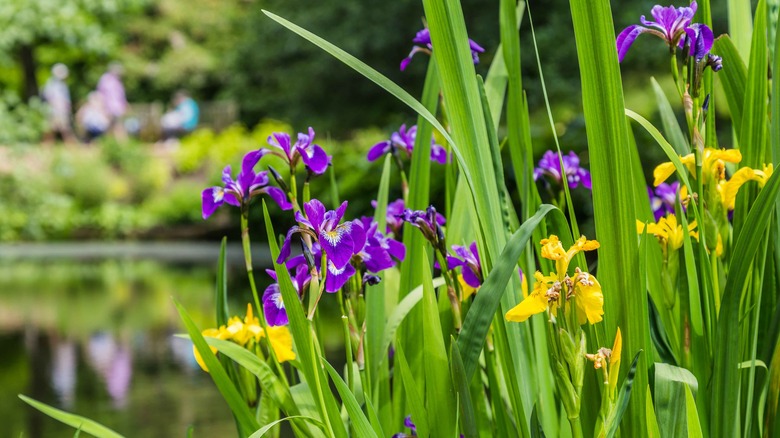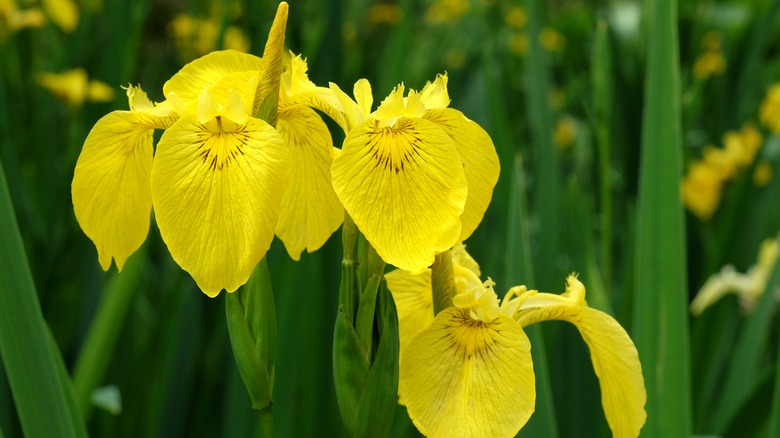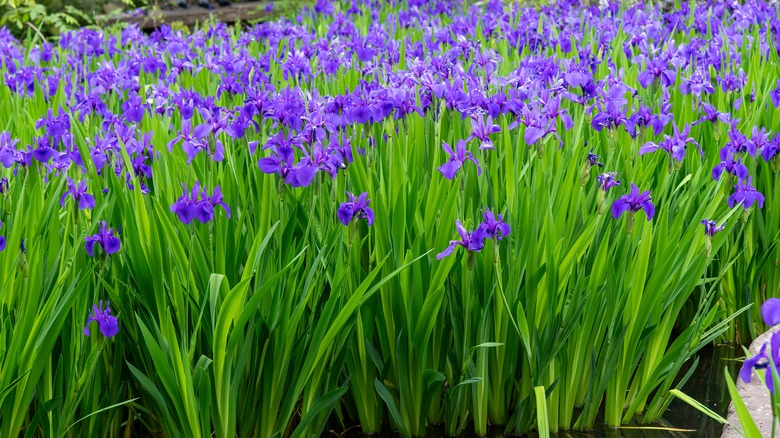Plant This, Not That: Why You Should Grow Japanese Iris, Not Yellow Flag Iris
It's not surprising to learn that irises get their name from the Greek goddess of rainbows, considering how colorful and beautiful flowers in this genus can be. With over 300 species in the genus, irises come in almost every shade you can imagine. Unfortunately, not all irises are appropriate for growing in the United States, and the beautiful yellow flag iris is actually invasive in much of the country. Instead of planting yellow flag irises, you should instead consider the less aggressive Japanese iris for bringing height and color around ponds and rain gardens.
Unlike bearded irises (Iris x germanica), which grow easily, even in dry soil, and are relatively drought tolerant, both Japanese irises (Iris ensata) and yellow flag irises (Iris pseudacorus) require consistently moist soil and thrive in ponds and wetlands. In the case of the aggressive yellow flag iris, its growth habit is a problem as it has quickly spread out of backyards and into wetlands where it threatens native habitats. While many stores still offer yellow flag irises for sale, the plant is now on the invasive species list for many areas, and states have launched eradication efforts to remove it from wetlands.
How to remove yellow flag irises and plant Japanese irises
While removing yellow flag irises may be inconvenient if they are already thriving in your pond or rain garden, it's more than worth the effort. Not only do these plants threaten native wetland areas, but they also spread so quickly that they are difficult to control, and their seeds can even clog pipes and other infrastructure. They are also toxic to animals, including fish. If you only need to remove a small clump of yellow flag irises, you may be able to successfully remove them manually, but for larger infestations, herbicides may be necessary.
As yellow flag irises and Japanese irises have similar growing conditions, anyone who had initially planned to grow the invasive yellow species should be able to grow Japanese irises just as well. Japanese irises are hardy in zones 5 through 9 and grow well in acidic soil conditions. A quick measure of the pH of your soil should let you know whether you need to add amendments before planting Japanese irises. Japanese irises thrive in full sun locations and appreciate wet and boggy soil during summer months. They need drier conditions in winter, so consider growing them in a pot that can be easily relocated during cold months. Japanese irises spread via rhizomes, and while they are not nearly as fast-growing or aggressive as many iris species, they still require division every three years.
Using Japanese irises in your garden and pond
Because Japanese irises require damp soil, they grow best in a rain garden or along ponds, ensuring that they have plenty of water during the summer months. If you opt to grow your Japanese irises in a rain garden, make sure to check on them regularly during drier periods and provide them with additional irrigation as needed.
If possible, Japanese irises are plants you'll want to keep in your pond for their beauty and because they can help filter the water, which is especially important if you have koi or other fish. The waste from the fish can also help to fertilize the plants. Other pond plants like dwarf cattails and sweetflag can make good companions in ponds alongside the iris. You may also want to consider growing southern blue flag irises (Iris virginica), which not only have similar needs to Japanese irises but are also native to the southeastern United States.


